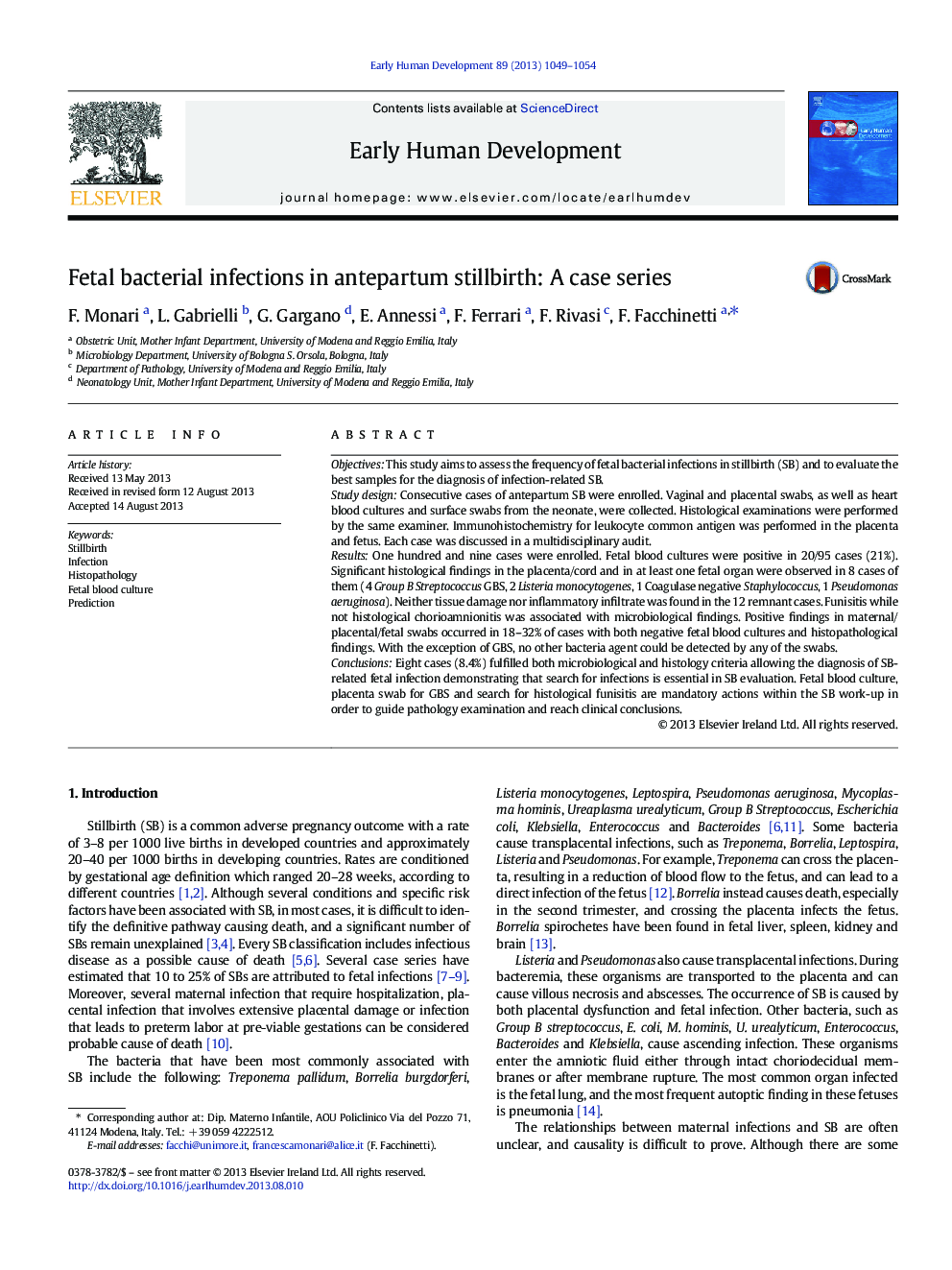| Article ID | Journal | Published Year | Pages | File Type |
|---|---|---|---|---|
| 6171946 | Early Human Development | 2013 | 6 Pages |
ObjectivesThis study aims to assess the frequency of fetal bacterial infections in stillbirth (SB) and to evaluate the best samples for the diagnosis of infection-related SB.Study designConsecutive cases of antepartum SB were enrolled. Vaginal and placental swabs, as well as heart blood cultures and surface swabs from the neonate, were collected. Histological examinations were performed by the same examiner. Immunohistochemistry for leukocyte common antigen was performed in the placenta and fetus. Each case was discussed in a multidisciplinary audit.ResultsOne hundred and nine cases were enrolled. Fetal blood cultures were positive in 20/95 cases (21%). Significant histological findings in the placenta/cord and in at least one fetal organ were observed in 8 cases of them (4 Group B Streptococcus GBS, 2 Listeria monocytogenes, 1 Coagulase negative Staphylococcus, 1 Pseudomonas aeruginosa). Neither tissue damage nor inflammatory infiltrate was found in the 12 remnant cases. Funisitis while not histological chorioamnionitis was associated with microbiological findings. Positive findings in maternal/placental/fetal swabs occurred in 18-32% of cases with both negative fetal blood cultures and histopathological findings. With the exception of GBS, no other bacteria agent could be detected by any of the swabs.ConclusionsEight cases (8.4%) fulfilled both microbiological and histology criteria allowing the diagnosis of SB-related fetal infection demonstrating that search for infections is essential in SB evaluation. Fetal blood culture, placenta swab for GBS and search for histological funisitis are mandatory actions within the SB work-up in order to guide pathology examination and reach clinical conclusions.
